Post
Han Dae-hoon PD: "Dungeon Stalkers aims to expand the genre, not just be a copycat."
Action Square unveiled its new PvPvE title 'Dungeon Stalkers' on the 15th. It's a dungeon crawler where you form a party to explore dungeons, combined with the 'extraction rule' often referred to as Tarkov-like. Players choose one of the characters with their own stories and explore the dungeon created by the witch's curse alone or with other users, take treasures, and escape.
Recently, user sentiment wasn't entirely favorable, as 'Dark and Darker' which is currently in a DMCA violation lawsuit for unauthorized leakage of new projects, had already showcased such a type. Especially with the mention of 'mobile' support, criticisms arose regarding graphics, motion, and character style, even leading to blunt criticisms of aiming for a 'quick buck'.
Personally, I was curious about the inside story. Han Dae-hoon PD, who is in charge of 'Dungeon Stalkers,' is a developer who went independent after working on the Mabinogi and Blade & Soul development teams and has created PC/console games such as 'Smashing the Battle,' 'Overturn,' and 'Metallic Child.' I was able to meet him in person to hear why he joined Action Square and released a work with a different color than before, and what elements differentiate 'Dungeon Stalkers' from other games.
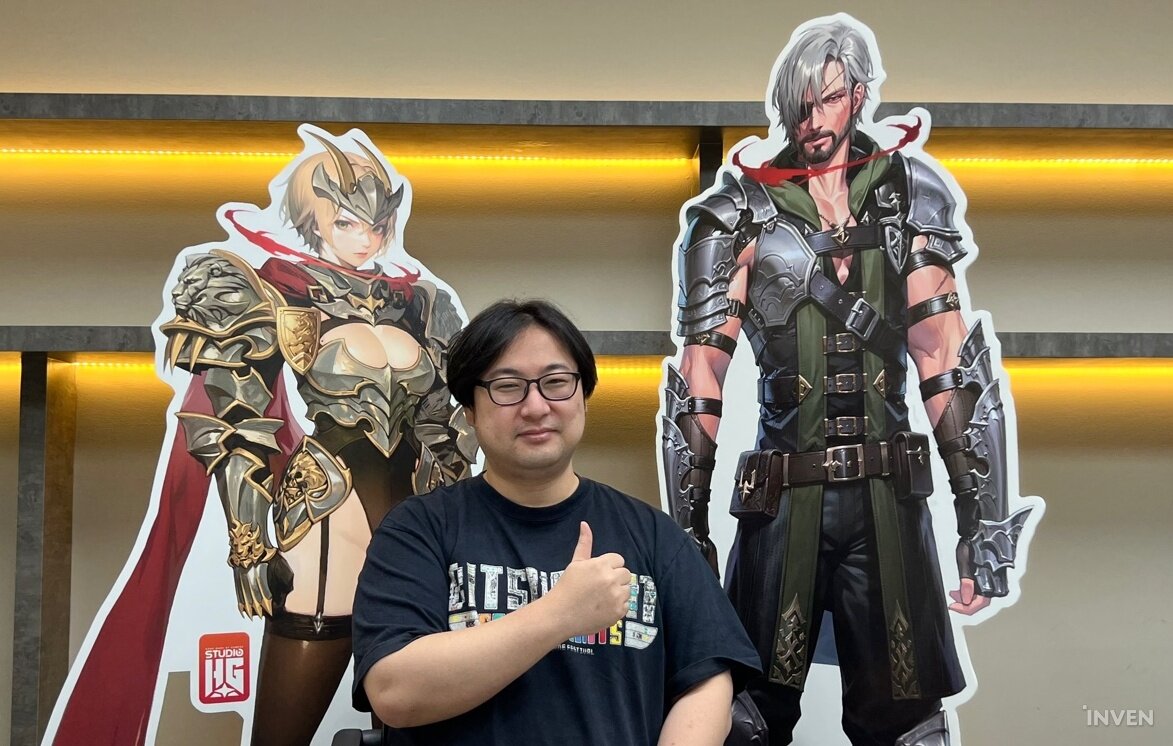
CBT planned for September/October, Early Access release scheduled for December

Q. You joined Action Square and announced ‘Dungeon Stalkers’ this time. What kind of game is it?
= Although it was revealed last week, I had been steadily preparing to create an open-world crafting survival game on SNS even before joining Action Square.
Afterwards, I came to Action Square to continue development, but building an open world while forming a team after developing alone for a long time felt quite unfamiliar (laughs). The open-world game I was making at the time was about meeting friends in the field and decorating in various ways, as reported in the news before, but even around that time, the core dungeon play was already close to the extraction genre, so-called 'Tarkov-like.' It was a two-way structure where you cooperate or compete with each other in the dungeon to collect loot and escape, and then use that to decorate your own space in the open world and interact with other people.
While continuing development after joining Action Square, I talked with various colleagues, and we decided to focus on making the dungeon first. While developing, we thought that would be better, and we focused on the elements of competition and survival in the dungeon, and the direction was decided as the current 'Dungeon Stalkers.'
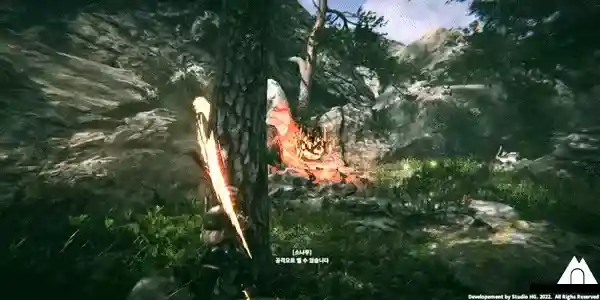
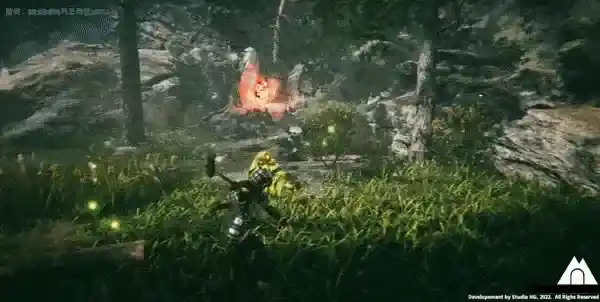

Q. It's become a hot topic because it's a genre similar to a work that's been an issue in the industry recently. When did you start developing it in earnest?
= Personally, I enjoyed Battlegrounds, Tarkov, etc., quite a bit, and I had the idea of innovating what I felt while playing them and releasing it. So, after the release of Metallic Child, I had been preparing little by little, and after joining Action Square in August of last year, I established the plan and started in earnest from September. But Dark and Darker had already done its first test in September of last year.
At that time, I was busy creating a prototype and building it up, so I didn't know. Then I found out when Dark and Darker did its second test, and after trying it, there were similar parts, so the team had a lot of concerns about whether to continue this project. However, we thought it was the beginning of the 'genre' and that we had our own characteristics, so we decided not to avoid it and boldly challenge it, and development continued. It's a shame that the situation turned out that way, but we thought we should make it properly and push through.
Q. When the video was first released, there were comments that the motion and graphics were somewhat disappointing, so it felt like it was released somewhat hastily.
= That's true. A huge issue broke out, after all. So I was cautiously continuing development, but in the meantime, I heard rumors that China and other places were also making games in that genre. There were concerns internally that it would be announced in droves during the game show season in the summer, and if we announced it then, it would be buried in the meantime. We had hope that users would look at it if we polished our own characteristics, but that was just 'wishful thinking.'
To be honest, I didn't want to announce it so hastily. I myself, including the development team, know very well that there are still many parts to refine and it's in a clumsy situation. However, internally, there was an opinion that we should let people know that 'this kind of game exists' so that we can expect user reactions and feedback, and I agreed with this and decided to do so. If people are completely indifferent, there won't even be that slight chance.
To explain the development process in more detail, we finished the plan in September and verified it with a core play-oriented prototype. After completing that verification, we started a new work. First of all, we are proceeding with refining the core first, and we are fully aware that the graphics and other parts must be further developed. So we will continue to refine it and conduct CBT to get verification from users before the Early Access release and receive additional feedback. Oh, and the Early Access release is scheduled for December.
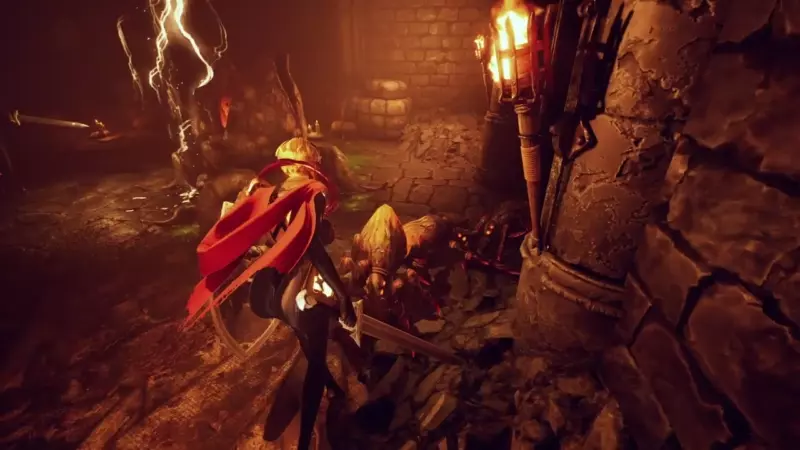
Q. It's faster than expected. What was the reason for deciding on the December Early Access release?
= I wanted to approach those who like this genre of game quickly. I also thought it would be better to get feedback quickly and refine it, even if there are shortcomings in the eyes of users. Since it's a genre where many people gather in a dungeon full of random variables, unexpected situations are bound to occur no matter what developers think.
So I thought it would be better to get hit first, get feedback on sudden variables or strange parts in the eyes of users quickly, and move forward together in the direction that users want. I want to share the experience of going into the dungeon with users, breaking through all kinds of variables, and succeeding in escaping.
Q. When are you planning to conduct CBT?
= The current goal is to test in September or October, especially during the Steam Next Fest season. After all, Steam Next Fest is a time when users are interested in and approach various games. No matter how many times we test internally, we won't know how users interpret and utilize each class, or how they deal with sudden situations unless we experience it ourselves. So we are working to test it at a time when we can gather as many users as possible.
Cooperation in the dark, and survival competition plus alpha
Q. The trailer introduced two characters, but how many will appear at the time of release?
= The current plan is to introduce 5 characters in CBT and 8 characters at the time of Early Access release. The two characters now are knight and hunter, and the rest will be thief, warrior, mage, priest, etc., a composition that comes to mind when you think of dungeon exploration. I thought that at least this much character pool would make the party formation diverse, and the structure of survival and competition would continue in various ways in conjunction with various situations in the dungeon. I'm thinking about which class to introduce first.
Q. Usually, the extraction genre has a strong character of 'survive' by throwing you into a certain world rather than building any character or story. It emphasizes 'class' or some characteristics rather than 'character.' But I'm curious why 'Dungeon Stalkers' mentions the background of the main characters from the trailer and introduces them as 'characters' rather than classes.
= I thought that increasing the number of characters rather than classes would give a fresher feeling, and that I could give a different feeling within that class. The currently released knight character is 'Hilda,' but the next knight character will have a different skill set from Hilda even if they use the same weapon. Even if the class is the same, the way to grow in the dungeon and deal with various situations is different if the character is different, so I expect you to enjoy the game with a more new feeling.
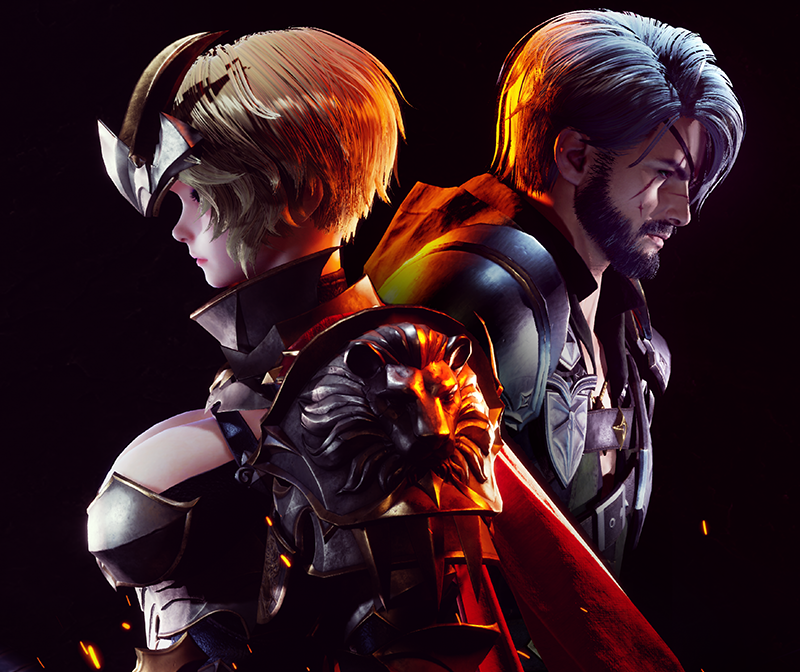
Q. In the video, only skeletons or bizarre flower buds are noticeable as enemies, but what other dangers are lurking?
= To explain the video in more detail, there was also a gargoyle. It may have looked like a trap or a skill, but if you look closely, you can see it small in the back. We have quite a variety of monsters prepared, but there are still parts that need to be refined, so we only included some of them in this trailer.
To talk more about how to deal with danger, 'Dungeon Stalkers' focused on the feeling of attacking the dungeon with a traditional party play. You can imagine a picture of a heavily armed knight standing in front and provoking aggro, and an archer supporting from the rear at a distance. We don't force party play like that, but there are plans to attack bosses and get rewards, and there are various variables in the dungeon, so I think it's beneficial to play together. Of course, we have prepared various systems for users who want to do it alone, but that's how I would explain how to deal with 'danger.'
Q. In the trailer, the dungeon only seemed to be narrow passages, so it was hard to imagine a giant boss. How are you outlining the actual structure and scale?
= As the grammar of the genre dictates, the dungeon itself is random. The monster placement and structure are different every time, and even if similar terrains appear, the monster pool changes, so the play itself is guided to be different every time. After all, the charm of this extraction rule is surviving by breaking through all kinds of variables in a closed space where you don't know what kind of danger will come.
So it's hard to say exactly about the scale, but the size of the dungeon itself will be a bit wider than you think. In the video, we focused on the appearance of confronting monsters in narrow and dark passages to maximize the feeling of 'dungeon.' It's not just those places, and while maintaining the concept of a dungeon, there will be wider rooms and various environments.
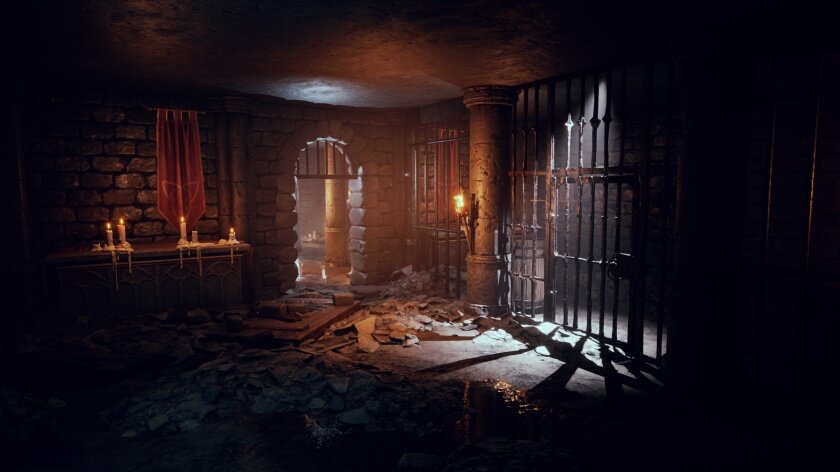


Q. Isn't the structure of fighting each other to get more rewards and escaping in a dark and dangerous dungeon already a formalized rule like a genre? I'm curious how you want to showcase the unique characteristics of 'Dungeon Stalkers' within that framework.
= Extraction, like Battle Royale, is a game that aims for survival and escape, so the basics are 'combat.' Even if you don't fight until the last winner remains, there is a charm in the aspect of fighting each other to get more rewards, such as unexpected gains. And to induce this, there are elements that narrow the battlefield, such as magnetic fields, which are the same in Dungeon Stalkers.
Here, we have added 'exploration goals.' You can think of it as a kind of quest or mission. It's not just about taking rewards and coming out, but also getting rewards if you perform it in the dungeon. The type is not simply killing someone or killing a certain monster.
For example, there is a corpse recovery mission. It's not about looting from the corpse, but about how many corpses of other players you collect and send back. Users who receive this mission can know this through a signal when another user dies nearby, and based on this, they can choose whether to fight or hide and collect only the corpse and leave to another place.
Of course, there is also a hitman mission to kill a designated player. The hitman can roughly know the location when he gets close to the target. Conversely, the player who is the target of the hitman mission will receive a warning that 'your life is being targeted by a hitman,' so you have to think about how to respond. In this way, instead of just entering the dungeon and surviving and escaping, you can prepare information according to each mission, predict the situation based on it, and design the settings, so you can find other solutions besides combat. We have also prepared character skill sets specialized in exploration and detection in addition to combat skills, so you can fully enjoy the fun with this purposeful play.
Of course, the fun of breaking through with combat in a dark, narrow, and dangerous dungeon where it is difficult to secure a retreat is the charm of the extraction rule set in a dungeon. However, I thought that the fun of this genre called 'extraction' lies in how well you can hide, farm, and profit by increasing your understanding of the game, even if you are relatively bad at combat.
Even Battle Royale, which is currently very popular, is not necessarily a continuous battle, unlike FPS and TPS. Of course, a decisive final battle is necessary to determine the final winner, but going to that stage is not a tournament. If you are lucky enough to avoid it and go to the end, you have the pleasure of eating chicken if you shoot well only once.
Extraction based on Battle Royale or shooting has a relatively wide battlefield, so it becomes a structure of first come, first served or surprise kill, but this doesn't work well even in close combat Battle Royale. It's hard to rely on chance because of the difference in equipment and physical ability. In that situation, I thought that only core users would remain if we only emphasized 'combat.' So, in order to secure not only core users but also light users and users who play with various concepts, we devised a way to find the fun of survival and reward acquisition by utilizing various elements of the dungeon environment other than combat.
Q. Was the decision to cross-platform not only on PC but also on mobile a way to secure a user pool?
= That's right. I wanted to show this game to as many users as possible. In fact, there is no game of this type on mobile, right? To tell you a technical story, real-time light is the key in this dungeon extraction. Those who have tried it will probably know. If you haven't tried it... should I say it's like the real-time torch of Darkest Dungeon? Anyway, securing visibility by relying on the torch in that dark place, and the feeling and various variables when it suddenly goes out or is obscured by something are the points that give tension and differentiate it from other survival competition.
But real-time light is not light, and there are various things to implement additionally, so I was wondering if it would work on mobile. At first, I was in the mindset of testing it once and focusing only on PC if it didn't work, but the prototyping worked well on mobile (laughs). So, from the perspective of securing more users, we also prepared mobile.
There are advantages and disadvantages in control due to the environmental differences between PC and mobile, but in fact, the charm of this genre is that it's not just fighting with control, but various variables are combined to make it a real 'chaos.' Mobile is a device that is inconvenient for users to operate, so there is a little correction, but we didn't make it more advantageous than that. Even so, the mobile team has won many times in internal tests, so we proceeded because we thought that mobile-PC cross-platform was sufficiently possible.

Q. If mobile is attached, there is a strong perception that it's because of BM, right? What about BM?
= To be honest, you can't put BM strongly in this genre even if you want to. Isn't it penny wise and pound foolish? It's a little different, but if you look at Battle Royale, which survives in fierce competition, mobile doesn't have the so-called Korean-style spicy pay-to-win type.
Like that, we also have no intention of adding impurities to the fun of purely farming, competing, and surviving in the game. There is nothing that affects the gameplay balance, and there is no P2W even in a roundabout way. We will raise the production pipeline to create more decorative elements such as skins and costumes more actively, and we are also paying attention to various aspects of the battle pass product composition. These days, there are many users who actively enjoy buying decorations and other things if they like the game, even without such spicy pay-to-win, right? Of course, for that to happen, our game has to be liked by users that much, and we are working to reach that level.
Q. Even though the main purpose is 'escape,' 'combat' takes place in a narrow and dark dungeon. If you consider mobile and PC, I'm curious how you set the combat concept.
= In fact, in games with close combat, there is no choice but to have a difference in physical ability. It's not like fighting 1:1 without external intervention in an environment with no way out like a fighting game, but anyway, when you hit a sword or throw a fist and foot once, you have a feeling, right? Like, oh, I can't do it?
But if that continues, people will eventually leave. There are elements that allow you to get rewards even if you do less combat, but as the question suggests, 'combat' is the key. If you can't make combat fun, you'll eventually drift away.
The reason why I emphasized real-time light is that light is a really important point in combat. If the torch goes out and the field of vision is blocked, it's difficult for even experts to respond to it instantly. And running away or ambushing in the dark is a common cliche, but in reality, it keeps coming out because it works so well.
So, there are many skills that emphasize these utility aspects, not just skills that directly inflict damage. For example, the 'mage,' which will be revealed later, can turn off torches in a certain range at the same time. The thief has a skill to brighten the field of vision even in the dark and share it with allies, and based on this, we are designing combat according to the standard of a dungeon attack party where the archer snipes from a distance.
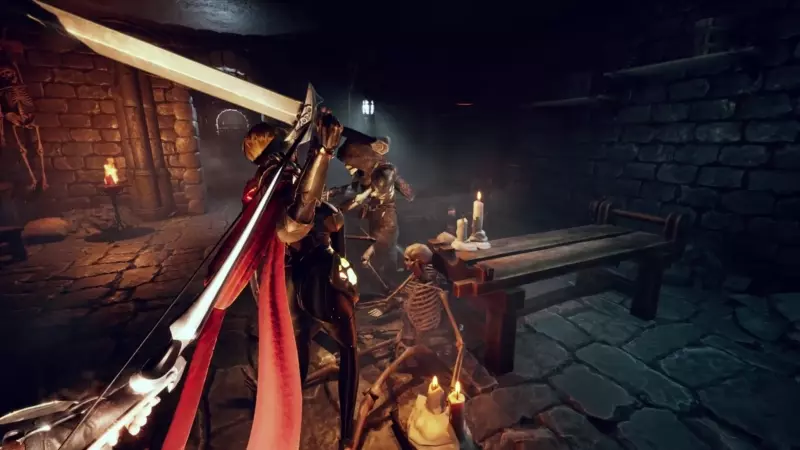
Q. You have developed several real-time action games even when you were a solo developer, and Action Square, which you are now a part of, is a company that has the slogan of action mecca. Can you explain more about the 'action' of each character besides team play?
= In this game, we approached it with party play and armor destruction. Among them, armor destruction is more of the core in individual combat.
I was wondering what the stress factors would be in this type of game, and I thought that there were two things: being unfairly hit once and dying miserably, and fighting with a sword but not being able to do anything and just being ridiculed. I thought about what kind of system would consider these two things at the same time, and I approached it with a system that destroys armor. If the armor is not broken, the engagement time is quite long, but after the armor is destroyed, the damage really goes in. It's such an important point in combat, so you can tell just by looking at the appearance whether the armor is half-broken or destroyed. If your armor is half-broken, you have to be careful, and conversely, if you confirm that the opponent's armor is half-broken, you can look at the angle and boldly fight to gain an advantage.
Of course, there is also the fun of ambushing by making the most of the darkness and narrow field of vision in the dungeon, not just frontal combat. It's also an element that you expect when you play a class like a thief. So, if you attack from the rear, you can give a critical correction like a headshot, even if it's not an assassination, so you can subdue the enemy more quickly. There are also skill sets related to that, so I hope you enjoy the fun of designing combat according to your class or skill set, such as ambushing using the environment or sniping, in addition to frontal combat.
Q. Party play was only mentioned in terms of role division. What is the core of action in party combat besides that?
= I would say it's about subduing enemies by matching up. There are also so-called CC skills, but they don't activate just by plugging in the skill, but in a way that party members have to match up and use them.
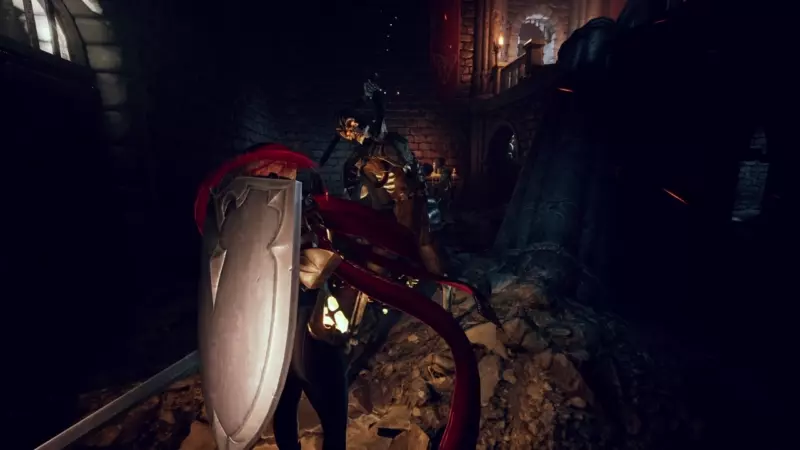
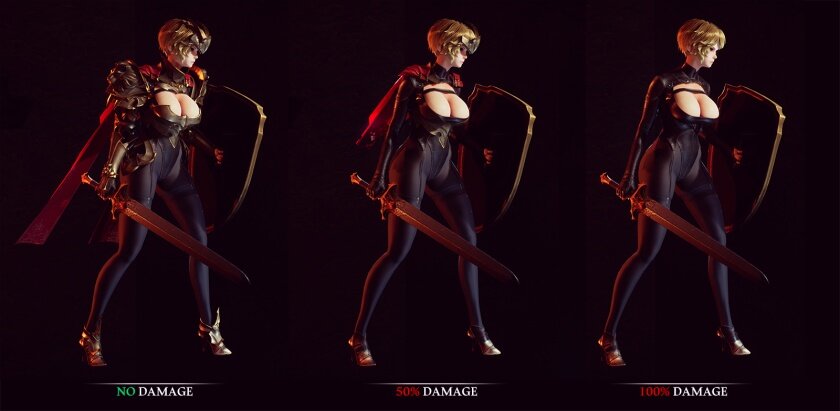
Q. Although it's a work from another company, isn't it a method that reminds you of Blade & Soul's joint attack?
= That's the feeling. I myself actually participated in the development of Blade & Soul, and there are people in the team, including Art Director Ahn Hee-cheol, who participated in the development of Blade & Soul in the past. Everyone left the team and enjoyed Blade & Soul as users for a long time, and when the team was organized and thought about action, the story of that time naturally came out. The most memorable system at that time was 'joint attack.'
In fact, that was a surprise in itself. On top of that, Blade & Soul is a work that still showcases action that I can't help but respect. Not only that, but it's also a game with a design that allows you to attack everything from simple core mobs to raid mobs in a well-organized way. It's not the type of attack that comes to mind when you think of MMORPG, such as avoiding floor patterns or breaking objects, but it's an example of intuitively showing the connection between action, control, and party breathing.
Of course, the combat system is not all benchmarking Blade & Soul. Our game pursues a relatively light direction among the extraction genre, but it's different from the speed and fierce back-and-forth combat of Blade & Soul. However, in party play, we were inspired by that joint attack. It's a concept where you have to apply the same CC skill with your team members to apply the CC skill, and it's a style where the CC doesn't work properly if it's a miss. You can think of it as aiming for the pleasure of party play action such as teamwork, team play, and synchronizing with momentary senses.
Q. If the skill sets are different not only for classes but also for each character, the number of cases will inevitably increase, and it will be difficult to balance them that much. How are you thinking about this problem?
= Isn't that a problem that all game companies face in common? That's why we are speeding up CBT and release. Even if we test internally, what users accept is different, right? It's meaningless if you don't listen to the opinions of users and adjust them. So we want to go in the direction of quickly testing, releasing Early Access, receiving feedback, and quickly fixing it.
The reason for showing a different style than realistic medieval style, and another design for differentiation
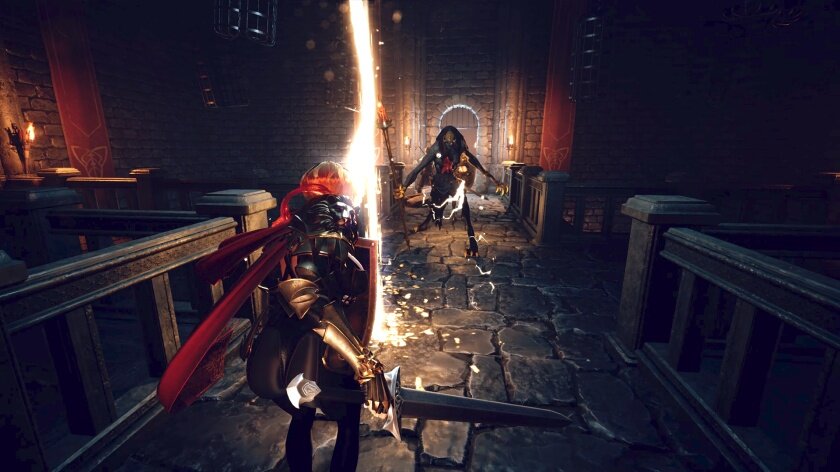
Q. Since you are preparing for mobile, it seems that the graphics of the trailer are being mentioned more in connection with this. What is the required specification, and how much will the graphics be upgraded in the release version?
= Raising the visuals themselves is no longer a problem because the engine is so good now. But 'optimization' is a problem. If server issues are added, it's a dilemma. So we are thinking about various ways to minimize the elements that hinder users who enjoy the game in low-spec environments or various difficult environments.
Especially since 'frame' is really important for action, right? There's nothing more frustrating and stressful than dying because of frame drops while playing. So I thought it would be better to catch that from the beginning, so I was catching that first. Mobile was of course the same.
The fact that hundreds of real-time lights are running on mobile itself makes me feel that the device has really improved a lot, and I realize that technology has advanced. Of course, it's important to enjoy it in a comfortable environment, so we are refining it in many ways.
The visuals may be somewhat unsatisfactory at this stage, but we are cautiously moving forward to catch both quality and optimization at the same time. You might say 'this is a bit much' because we are doing mobile together, but we are preparing to show a quality that users can accept at the time of release.
Q. Since the extraction genre emphasizes tactical movement and realistic survival, there are also stories about the character style. The main opinion was that it was different from the image of exploring a dark dungeon. What are the reasons for choosing that style while enduring this?
= In fact, wasn't the beginning of this genre military, tactical, and further, realistic medieval dungeon exploration? We were also influenced by that style, and there are overlapping parts in the genre, but as I said before, the project we were originally making was a little different. We focused on the direction of dungeon extraction and released it independently, but the original direction and what I wanted to make didn't change completely.
And I also thought that if it was too realistic, the scalability would be poor, and I thought it would be difficult to differentiate it. So there is a more light and casual side. Then the design of a too realistic medieval style doesn't fit well. For example, one of the warrior characters uses a grappling hook to pull the opponent, but it wouldn't fit if it was a realistic and tactical design.
I also know about the aversion to the so-called Korean-style beautiful characters. But when the genre expands, isn't the graphic style tried in various ways accordingly? From Battlegrounds to Fortnite to Apex, just looking at Battle Royale, each graphic style is different and the style they promote is different.
And to be honest, I myself like pretty characters (laughs). Those who have seen the works I have developed alone will know that. I really like the appearance of pretty characters playing an active role, so I have been making those things. Now I am in a position to lead and command the team, but I didn't feel excited if I tried to remove those elements.
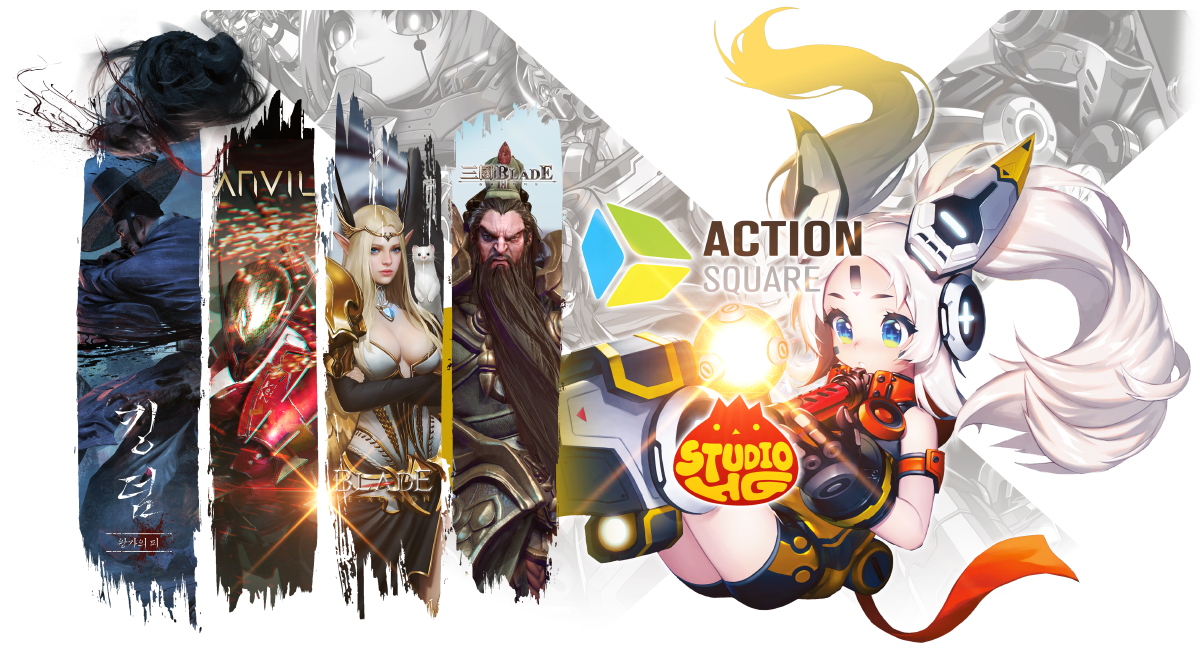
When you think of dungeon attack, you usually think of medieval Western style based on D&D, so you might think our style is heterogeneous. But when I first planned this game, I thought of 'Wizardry' and dungeon attack games or dungeon attack works derived from it. Of course, the beginning was the Western world, but isn't it a style that became more popular in Japan? It has also been developed more actively in Japan. So, based on this, I have been drawing the appearance of pretty and cool characters playing an active role. I don't know if it's because of that reason, but looking at the video reactions, there are many reactions from Asian countries such as Japan and Taiwan, including Korea.
I also thought that the more similar the style is to the work that first introduced the genre, the more we would praise that work, and our work would not be evaluated as it is. Of course, because that issue has become too serious, there will be users who are looking for alternatives, and from the perspective of those people, we are heterogeneous, so negative reactions will inevitably come out. But rather than remaining as that 'alternative,' we thought we should do what we can and be evaluated as it is, and be recognized as a game that expands the range of styles in the extraction genre.
Of course, we will raise the lacking quality, and we will not emphasize only the extremely pretty and cool styles. That's because it's a basic grammar that gives persuasiveness to this genre of fiercely surviving in various dangers. But rather than leaning towards 'real' and 'tactical,' we want to show pretty and cool, and lighter and more diverse styles of costumes and designs within a range that doesn't cross a certain line.
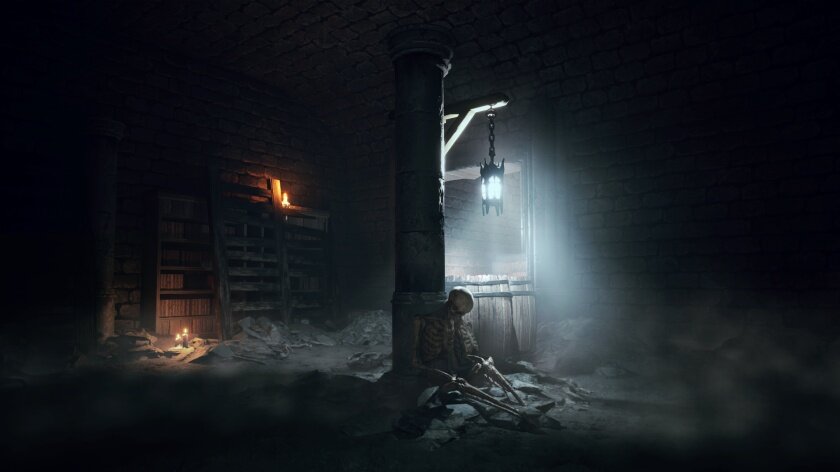
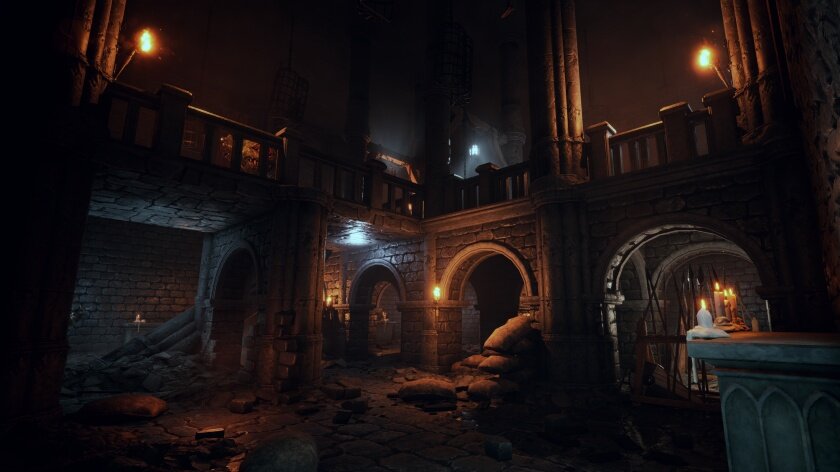
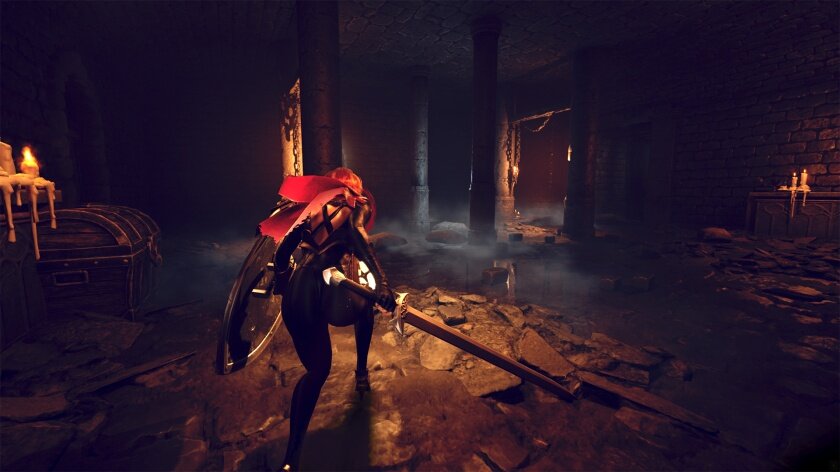
Q. Isn't the extraction rule itself becoming a 'genre'? What are the differentiating points of Dungeon Stalkers other than the combat system within that framework?
= Dungeon Stalkers has 'constantly changing play' as its keyword. Of course, the rule itself is set in a randomly changing field or dungeon, so you might say what's the difference, but we are trying to differentiate it by deepening it further.
The 'witch's curse' emphasized in the trailer is the key. The concept is that the witch who created the dungeon is playing tricks with curses every time the battlefield narrows as the 'blood curtain,' which is similar to the magnetic field in other games, unfolds. That curse is not just a debuff or buff, but it has a great influence to the extent that the gameplay direction itself changes from time to time.
For example, there is also a sudden death rule. Then, until the curse changes, you will die if you get hit once, regardless of the armor state. Or there is a curse that revives corpses. Then, not only the monsters that have died so far, but also skeletons are summoned from the corpses of dead users and attack the users. In addition, the player's location is suddenly exposed, or powerful monsters appear, and various curses come out randomly. The fun of improvising in such a constantly changing environment is the core of Dungeon Stalkers following party play and action.
Along with this, I personally think that I have also put in the fun elements of 'rogue-like.' If you say fun in rogue-like, isn't it 'luck'? It's emphasized mainly on bad luck, so-called '억까,' but there is also the pleasure of breaking through excitedly when you accidentally get something really good. One of the blessings of the statue in the test build is that lightning strikes when you do a normal attack, and the team members who got that were so excited while testing.
In fact, it doesn't make sense for 'lightning to strike' in that narrow dungeon. Even if it's fantasy, there is room for saying that it's too much. If you emphasize tactical, realism, and this too much, I thought that the range would be limited. So I thought we should create more variables while embracing various styles in a light and casual way. Of course, I'm worried about what to do if those things are too strong, but in rogue-like, the fun of raising a good tech is only for that game, right? If we lightly release something, we want to balance lightness and seriousness by adding those elements.
Of course, this is something that must be appealed to in a state where the basic fun of the genre-ized grammar is equipped. So we are constantly refining the core of exploring, surviving, and fighting in the dark. But if we keep emphasizing only that, we will end up only as a copycat, and it won't help much in expanding the genre. I think that going in the direction that we think is fun based on that rule, rather than a small quality competition in the midst of imitations, is ultimately the way to expand the genre and the way to survive.
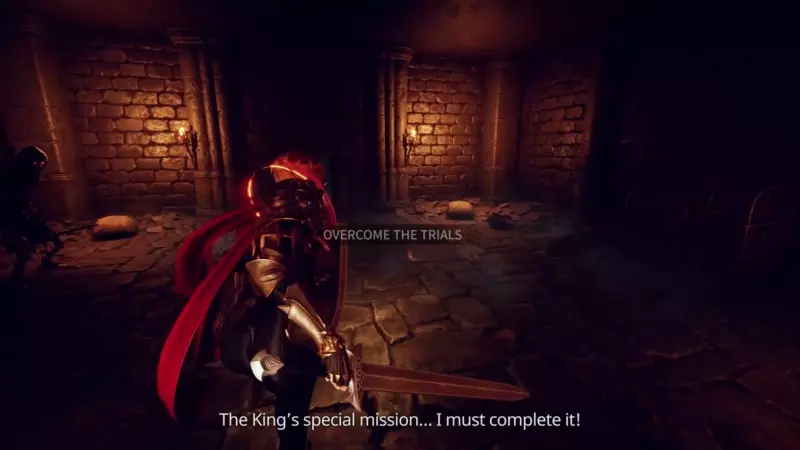
Q. Do you have any intention of releasing it on consoles in addition to PC and mobile?
= Wouldn't it be nice if the PC version came out well and settled down? (laughs)
I myself really like console games, so when I was working as a solo developer, I released works not only on PC but also on consoles. The desire to enjoy my game on consoles was also a driving force. It's no different now. And these days, multiplayer games are popular on consoles, right? However, I am not in a situation where I can move freely alone, and the work is being done as a team and the release must be prepared quickly, so I think we should take it step by step.
First of all, if the PC version does well, there are many people in Action Square, including me, who have experience developing console games, so I think it will be smooth to release it on consoles. Releasing it on consoles means that the PC version is doing well, so I hope I can definitely deliver that news.
Q. It feels like it's being buried because of the issue of the genre itself, but what are the more clear goals of 'Dungeon Stalkers'?
= We want to appeal to fans of classic RPGs and the extraction genre, and also to people who found it difficult to play because it was hardcore. To this end, we want to show differentiated fun and better fun with unique action and style, as well as various variables such as the witch's curse. We hope that not only fans of the genre, but also a wider range of users will enjoy playing in their own way and the base will be widened.
Q. You announced the Early Access schedule quickly. What is the rough blueprint after that?
= Starting with 8 characters, we will update characters regularly. The cycle has not yet been confirmed internally, but we are clearly feeling while testing internally that new fun is created each time a character is added. We think it's the key to increasing the fun and life cycle of the game, so we are preparing it in various ways.
In addition, we are preparing various modes so that more diverse users can adapt to the game. One of them is a limited-time raid. It allows users who are not yet familiar with PVP to understand the concept of character skills and connections with PVE, and to feel the basic fun of combat in Dungeon Stalkers. If you clear the raid, you can get various rewards such as the weapon used by the boss, so existing users will also play to acquire rewards, right?
Of course, if that becomes the main thing, dungeon exploration will not work properly, so we are preparing it as an event that is open for a limited time at a certain time, not always open. The rewards are also being designed within a range that does not harm the balance, but to the extent that players can access them to some extent during the event period. And the direction may change depending on user feedback. After all, isn't this genre a genre where users try to create their own aspects in a constantly changing environment? 'User' is the key.
Q. Finally, please say a word to the users.
= Rather than just stopping at 'feedback,' we want to actively engage in communication. We have already received approval internally. They said it's okay to say anything as long as you don't fight with the users (laughs). Of course, that doesn't mean that I can give a refreshing answer that can satisfy all users with eloquence, but at least I won't 'shut up.'
So I quickly told you about the test and release schedule in order to get feedback quickly and adapt to the users. Isn't it the trend of multiplayer games to do tempering with users? I'm sure I'll hear a lot of hurtful words in the process. In fact, I can already see those words now, but I think I have to endure that and move forward.
Before joining the team, I had a lot of regrets about that part of 'Metallic Child'. It was the same with other works, but with Metallic Child, I really thought I should reflect people's feedback well and update it well this time. But doing it alone was really beyond my capabilities. I did a big update, but I didn't think it went well. I just felt sorry to the users.
This time, I'm working with good colleagues, so I'm determined to reflect that feedback well and move forward. We may shrink back when we hear bad things, but we will overcome and move forward by talking and communicating together. Due to the nature of the genre, there are many core users, and there are games that have become a big issue in this genre, so we are already aware internally, not just me, that there will be a lot of opinions exchanged. But we can't avoid that, so we're preparing this place to reveal and tell you quickly so that we can break through it head-on. I hope you will play the game in the upcoming CBT and Early Access and tell us any inconveniences or areas that need improvement at any time. We will work together to complete a fun game.

Webzine Inven윤서호 기자
2023-06-19